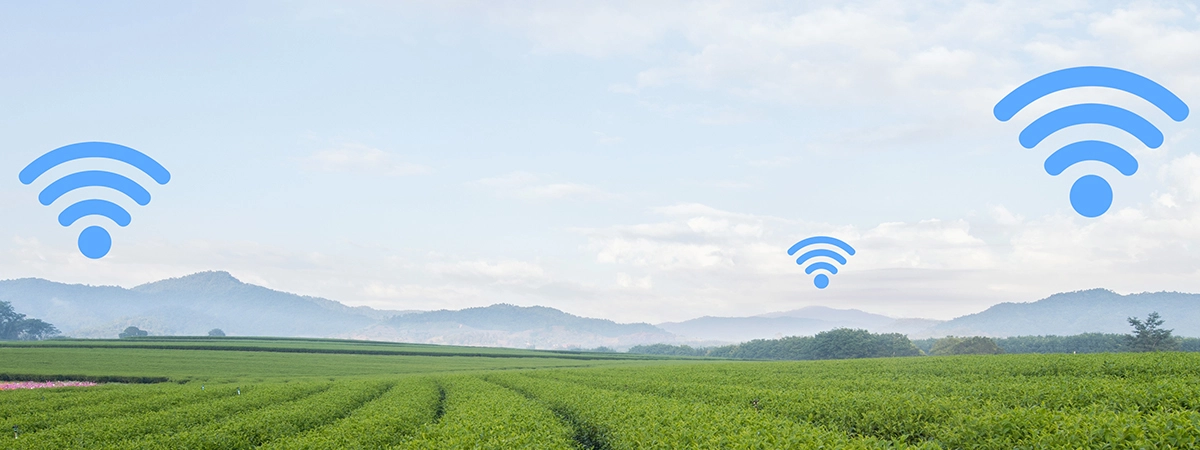Rural Broadband
Test Solutions for Network Providers
A Proven Track Record
With a long and diverse history of collaboration with service providers, utilities, system integrators, and federal, state, and local government agencies, VIAVI Solutions has played a pivotal role in the successful deployment and maintenance of communications networks. This includes an investment in the talent and resources needed to bring next generation broadband service to unserved and underserved areas of the country.
VIAVI thoroughly supports rural broadband customers, providers, and operators throughout the network lifecycle. Automated test and measurement solutions are backed by the experience and expertise needed to confidently meet FCC delivery milestones and reporting requirements. With time-to-market, SLA conformance, and efficiency heightened by rural broadband requirements, the advanced automation and remote access features of the VIAVI portfolio are helping to bridge the digital divide.
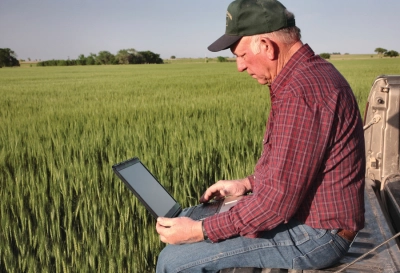
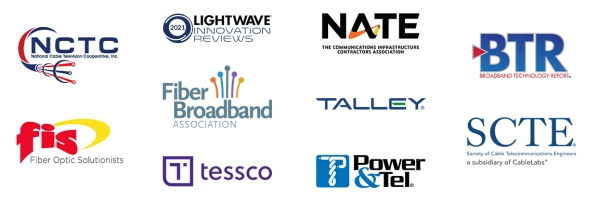
What Does VIAVI Offer?
The Rural Digital Opportunity Fund (RDOF) and other funding sources bring much-needed financial backing that accelerates the growth of rural broadband. However, the new technologies enabling high-speed, reliable internet service like PON and DWDM can be challenging to deploy and maintain – especially in a time of workforce shortages and dwindling supply of experienced personnel. Outsourcing of network construction, and sometimes service activation and maintenance, is a common element of many projects but can create challenges if procedures are not followed and/or properly documented and communicated.
VIAVI partners with those deploying rural broadband to simplify and streamline service deployment.We offer advanced test solutions for fiber, wireless, cable, and hybrid networks designed to address the latest technologies, requirements, and use cases. Equally important, our solutions incorporate powerful test process automation to simply testing for less experienced users, ensure repeatable processes and document completed work. VIAVI brings decades of broadband service deployment experience working with customers in virtually every environment and can be a resource to assist through every stage of your project – proposal, planning or deployment. VIAVI provides the solutions and experience to help ensure:

- Work gets done right the first time, on time and every time, eliminating costly rework and delays
- Network faults and failure conditions are proactively identified and resolved – before they become customer-impacting
- Efficient capture and storage of network and customer performance parameters to meet project documentation and reporting requirements
Who Are Our Rural Broadband Solutions Designed For?
Beyond simply defining how to get broadband in rural areas, extended coverage calls for the participation of multiple public and private entities. VIAVI rural broadband solutions are designed to enhance the confidence and capabilities of each stakeholder.
Service Providers are equipping millions of new users with high-speed rural broadband internet. The vast majority of winning RDOF bidders plan for "above baseline" (≥ 100/20 Mbps) service that emphasizes careful planning and ongoing performance monitoring. Regional service providers expanding the reach of their networks rely on portable, intuitive tools to automate test workflows, verify conformance, and expedite deployment.

Utilities experience many of the same logistical challenges associated with broadband internet for rural areas as they extend their infrastructure to remote locations. As high-speed internet goes from luxury to necessity, electric companies and other utilities can leverage these similarities. Dual-purpose meter reading/internet fiber runs are among the innovative deployment options. Handheld fiber testing solutions designed for PON activation, maintenance, and troubleshooting enable utilities to transform their service offerings and the lives of their customers.
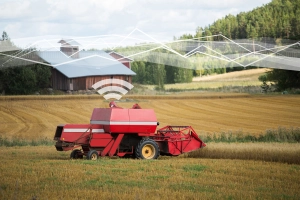
Cable Operators aspire to extend their existing coaxial services to rural areas. The distances traversed can create challenges for maintaining adequate signal quality. HFC (hybrid) options allow cable operators to extend their networks more cost-effectively and reliably by running fiber extensions to underserved or unserved areas. VIAVI offers interoperable and portable service activation and troubleshooting tools that can simplify rural broadband deployment for mixed mode applications.

Contractors play an integral role in the timely and efficient deployment of rural broadband services. In many broadband deployment projects, fiber network construction is performed by contractors; some operators rely on contractors for service activation and maintenance as well. VIAVI can play an active role in these dynamics by providing solutions that enable a swift, clean and well-documented handoff of completed work between contractors and operators – ensuring the work is done on time, right the first time and accelerates payment for completed work.
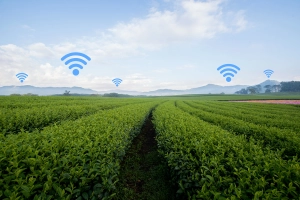
What is Rural Broadband?

FCC reporting has shown that over 14 million U.S. residents have no access to broadband internet, with the majority residing in sparsely populated, rural areas. When service is available, it is often slower and less reliable than what is found closer to urban centers. The economic benefits that come from broadband for rural areas have led to an increased awareness of the "digital divide" and a rural broadband initiative aimed at 10 Mbps speed and ≤ 100ms latency lower limits for virtually all Americans.
Why is Broadband important in Rural Areas?
Education over the internet has quickly progressed from novelty to commonplace. The need for virtual education has long been evident in rural settings with limited access to college campuses. Rural broadband helps to level the educational playing field for students where brick and mortar options are limited by providing options for virtual or independent study

Healthcare access is a serious concern for residents of rural communities where the nearest medical center could be hundreds of miles away. Telehealth practices have steadily improved, with virtual consultations replacing routine appointments and high-speed internet access bringing advanced medical equipment, records, and expertise to rural clinics.

Farming and ranching are historically underserved broadband markets, despite the lifeline to healthcare, education, e-commerce, and other services that the internet provides. Modern farmers can also benefit from precision agriculture techniques based on real-time data collection and analysis that can only be implemented with a broadband connection
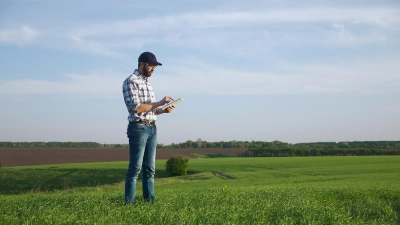
What Happens if You Don't Test Rural Broadband?
For FTTH and HFC networks, PON, DWDM (dense wavelength division multiplexing) and other advancements have introduced additional signal complexity and insertion loss points. Long fiber optic cable runs are also susceptible to bending, contamination, and environmental damage. These factors can lead to unplanned performance issues down the road if not tested during construction and activation.
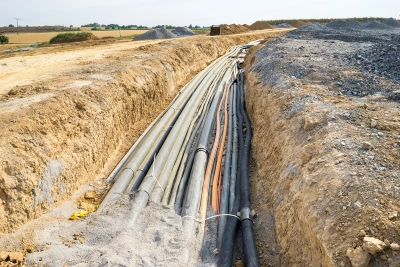
Wireless networks are also subject to outside factors that can lead to interference, spotty coverage, and security issues. Latency, throughput, and other network KPIs should be assessed prior to and during turn-up, and continually thereafter. For government-sponsored deployments, failing to test adequately can also lead to consequences when performance and service level expectations are not met during FCC audits.
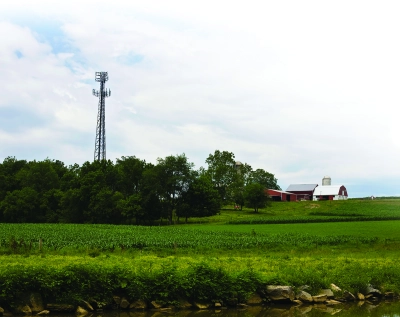
End-to-End Networking From VIAVI
VIAVI offers complete rural broadband solutions to support common deployment options throughout their lifecycle. An end-to-end network test philosophy eliminates performance blind-spots and optimizes quality of service (QoS).
Utilizing fiber for last mile connectivity provides high bandwidth performance and low energy consumption with a media well suited for long-distance communication. When fiber to the "X" is deployed for new rural broadband customers without legacy infrastructure, the latest construction, transmission, and connection technologies can be leveraged.
PON: Passive Optical Network (PON) technology, with unpowered fiber and splitting components creating a point to multi-point topology, has become a popular option for rural broadband fiber deployments. G-PON technology can easily meet RDOF performance baselines, while XGS-PON is a forward-looking option capable of 10 Gbps speeds for both upstream and downstream traffic.
- Efficiently and cost-effectively build, activate, and monitor PON FTTH networks
- Ensure the network is built right the first time and avoid common pitfalls like incorrect x-connects or dirty connectors that can create problems later
- Quickly ID, locate, and remove fault conditions like bad splices, fiber bends or breaks
- Capture and store network and customer performance information for service "birth record" and reporting requirements
Hybrid fiber-coaxial networks are a logical fit for rural broadband internet service in many regions. By combining the best of both technologies, high speed fiber can be terminated close to the customer site, while economical and familiar coaxial cable can be deployed for end user connections. Improved DOCSIS technology is minimizing the gap in coaxial performance vs. native fiber networks.

- Build the network and activate new services right the first time
- Detect network impairment issues sooner and fix them faster
- Capture and store network and customer performance information for service "birth record" and to meet reporting requirements
High-speed backhaul is essential for rural broadband rollout in the coming years, regardless of the delivery mode. With backhaul infrastructure non-existent in many remote areas, careful planning is needed to optimize local and regional backhaul utilization while improving the service activation and performance management processes.
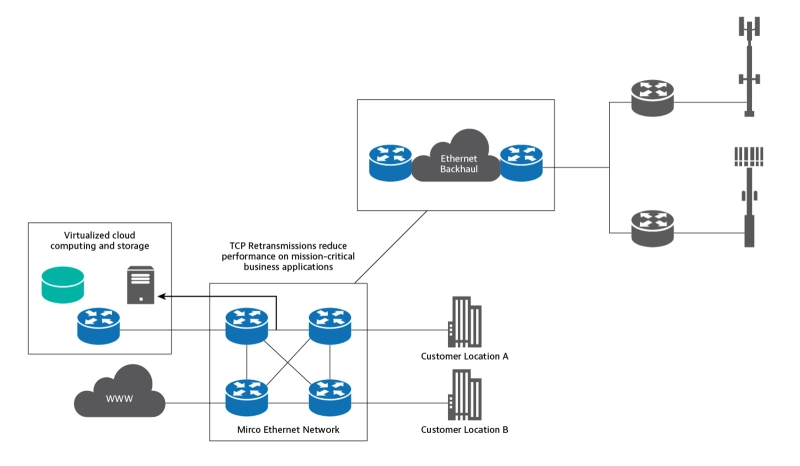
VIAVI Value
- Activate and monitor Ethernet connections quickly, safely, and cost-effectively
- Ensure end-to-end performance of customer applications
- Verify that SLA or performance requirements are being met
Broadband wireless is a viable deployment strategy that eliminates the build out of last mile infrastructure and can accelerate broadband delivery to unserved or underserved areas. Antenna installation and activation becomes a concern for these users, particularly where hills, trees, or other obstacles create line-of-site obstructions.
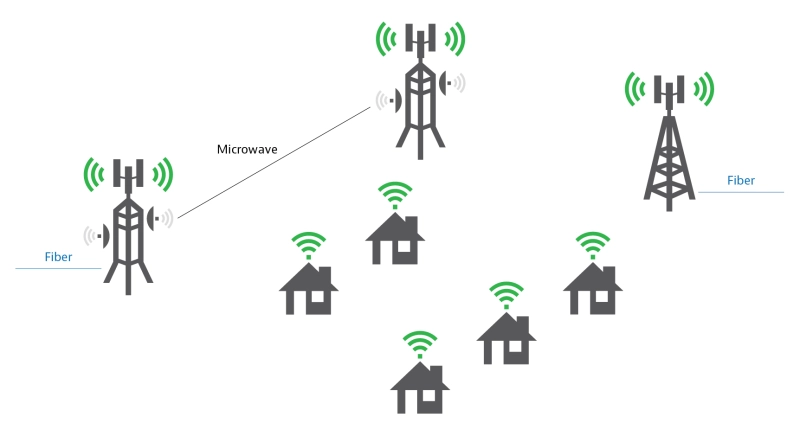
VIAVI Value
- Ensure wireless network performance and resolve issues related to improper installation or interference
- Verify proper antenna alignment to meet design criteria for coverage and performance
- Test Ethernet backhaul over fiber or microwave
Law enforcement, EMS, and utility companies in rural areas rely on land mobile radio for critical public safety and emergency applications. While the reach of mobile radio expands in parallel with broadband internet for rural areas, it also provides a vital communication link for broadband installers, operators and technicians working in areas with little or no cell coverage.
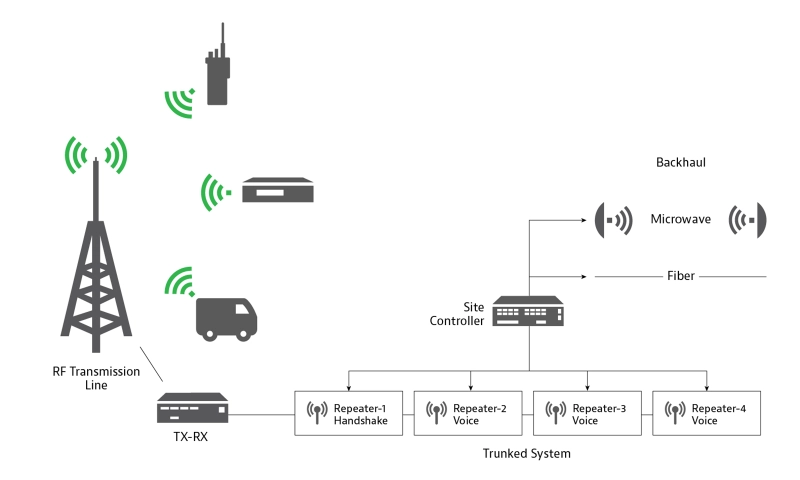
VIAVI Value
- Ensure all components and network segments of the mobile network are functioning properly
- Test all elements including radio performance, antenna and site installation & maintenance as well as backhaul
Applications
The rural broadband initiative has changed expectations for network boundaries, customization, and delivery timelines. At the same time, advanced test solutions designed for traditional broadband installation, activation, and maintenance are extremely effective for rural broadband applications.
The fiber enabling broadband internet for rural areas is part of a challenging and complex construction process. With an average installation cost of $27,000 for each mile of fiber deployed, small carriers serving sparse populations must minimize their CAPEX. Automated test tools and processes with an emphasis on "right the first time" are essential.
- Fiber Inspection: A single particle, defect, or contaminated end face can lead to insertion loss, compromised network performance, and costly rework. Automated fiber inspection routines, compact inspection tools, and wireless connectivity standardize and accelerate rural broadband fiber inspection.
- Fiber Certification: Tier 1 and 2 testing and characterization verifies the fiber, splice, and termination quality of the rural broadband installation. Wavelength selective optical power meters and specialized OTDR equipment dedicated to PON applications can be useful when the end-to-end construction includes multiple splitters.
- Fault Location: Improved OTDR to pinpoint issues in long-haul fiber runs can be used to support fault location during rural broadband construction. Visual fault locators (VFLs) using visible laser light to test continuity and identify fault conditions are a compact option for fiber runs ≤ 3 miles.
Once the fiber network has been fully inspected, characterized, and certified, service activation practices focus on establishing rural broadband reliability out of the gate. Benchmarking network delivery KPIs, validating service performance (QoS), and quickly identifying any latent defects from the construction phase are prime considerations.
Long term service assurance requires ongoing monitoring and maintenance. Fiber links carrying sensitive customer data should be monitored remotely for fiber degradations and security breaches using hands-free monitoring solutions with automated alerts. When network problems do occur, the same versatile test solutions used to streamline construction can be used to troubleshoot issues and reduce mean time to repair (MTTR).
- Backhaul provides a vital lifeline to the network hub, yet is vulnerable to the same physical, environmental, and security (tapping) risks as other fiber links. Automated fiber monitoring and transport assurance solutions, along with strategically placed microprobes, are among the best tools available to prevent backhaul issues from impacting the quality of broadband for rural areas.
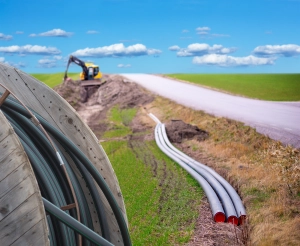
Solutions
The proven VIAVI broadband test solutions for FTTH, wireless, and hybrid deployments seamlessly support rural broadband rollout and ongoing assurance. This versatile tool kit can also be used to verify SLA conformance and KPIs to improve customer satisfaction and FCC audit preparedness.
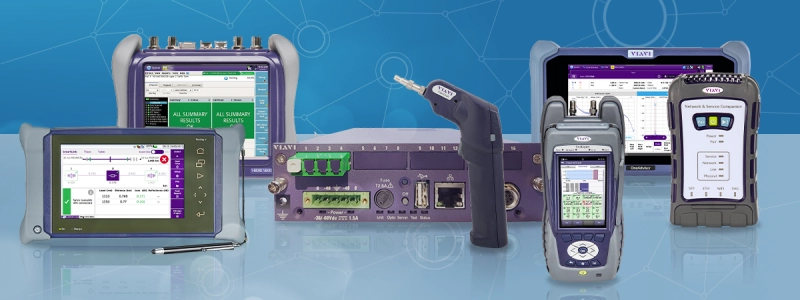
The FiberChek Probe is ideal for rural broadband fiber inspection and troubleshooting applications, with autonomous workflows, Pass/Fail indication, auto-focus, and PON network compatibility.
With an intuitive user interface and ultra-compact, hands free design, the PON optimized SmartOTDR enhances the speed and accuracy of rural fiber deployment, certification, and troubleshooting. The compact T-BERD/MTS-2000 and highly modular T-BERD/MTS 4000 are additional, automated fiber test tools featuring optical return loss (ORL) testing, VFL, fiber inspection, OTDR, and simplified one-touch operation.
The Optimeter is a powerful tool for in-premise fiber network activation that requires no special training and provides complete results within one minute. The Network & Service Companion (NSC-100) is a compact solution used to benchmark network delivery and validate service performance for FTTH/PON, CATV, Fixed Wireless, or Telco (DSL) access networks.
The OneExpert CATV supports cable network testing and troubleshooting for DOCSIS, WiFi, or Gigabit Ethernet service with automatic channel identification, rapid MER/BER testing, and powerful ingress testing. The 360 DSP meter is designed specifically for DOCSIS 3.1 installation and includes virtually all options needed to verify service quality. XPERTrak is a service assurance and network maintenance system that spots at-risk subscribers before they churn and address the root cause issues quickly with integrated find and fix tools including plant leakage and field meter interaction.
As the industry's smallest 10G handheld network tester, the T-BERD/MTS-5800 is an advanced FTTx and fiber backhaul test, certification, and reporting tool. The T-BERD 5800 is also compatible with VIAVI P5000i fiber microscopes and OTDR modules, forming a complete end-to-end metro/backhaul solution.
Advanced wireless test solutions include the OneAdvisor-800 for coverage verification, spectrum analysis, and interference hunting and the CellAdvisor Cable & Antenna Analyzer (CAA) which performs complete RF and fiber testing with a single device. Both solutions are configured for cloud-hosted test configuration and data management via StrataSync.
A Remote Fiber Test System (RFTS) such as the VIAVI ONMSi optical network management system maximizes rural broadband uptime and minimizes MTTR by continually monitoring fiber condition. On-demand troubleshooting routines isolate fiber versus active element problems. The SmartOTU standalone remote fiber test solution can be deployed straight out of the box to monitor critical fiber runs within smaller networks, with no additional training or IT certification required.
Viavi Test Process Automation combines multiple elements that simplify and streamline critical broadband testing and documentation, including:
- Intelligent, one-key tests that speed testing processes and reduce the need for expertise
- The ability to define, edit/update and deploy these automated test procedures to all staff and contractors with consistency
- Job manager functions that provide common, guided processes
- Fast, automated reporting on field test results and network performance metrics
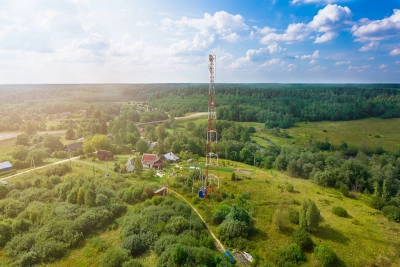
Why is Rural Broadband Important for The Country?
Broadband internet access in the digital age is on par with the electrical and telephone services that became commonplace by the mid-20th century. As society becomes virtualized, the economic, health, and educational benefits of broadband for rural areas are undeniable. The historic RDOF funding of 2020 may soon be viewed as a small down payment towards a more equitable and productive future. As a stalwart rural broadband supporter and leading innovator of broadband test tools and practices, VIAVI fully understands how to get broadband in rural areas.
Let Us Help
We’re here to help you get ahead.
